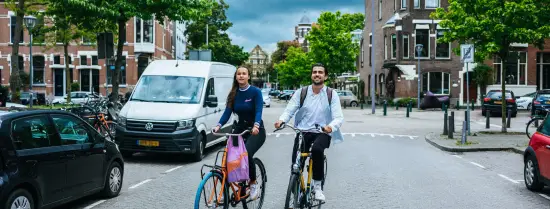
In the study of Derk Loorbach, director of DRIFT and professor of socio-economic transitions at Erasmus University Rotterdam, there is an unusual table. A linear relic, made of old aircraft parts, he laughs. Our conversation is about the transition from a linear to a circular economy.
How circular is the Rotterdam economy at the moment?
'We are on our way, but the economy is still very much linear. The port of Rotterdam is the largest industrial hub in the linear economy in the north-western hemisphere. The port’s traditional business model is entirely based on the linear economy: we mine raw materials somewhere in the world, process them into a product, which we throw away after use. All kinds of companies have started making all the things we want. Governments have contributed to this, because these companies provide jobs and revenue for the government through taxes. Even in the city, a lot is still linear.'

'We get our food and building materials from outside, do something with them in the city and what remains is taken away by the waste collector or disappears into the sewer. When it comes to the environment and what we dump in it, we are now mostly concerned with being less bad. The factories and the cars are already there, so we say let’s try to make them a bit cleaner. We do try our best to do it less badly, but in doing so we also help to perpetuate that linear way of producing and consuming.'
From less bad to circular: is that happening in Rotterdam?
'In Rotterdam, we have developed a better system of waste collection and separation and we use the heat released from waste incineration to heat houses and greenhouses, so they don’t have to use natural gas. These are good developments in themselves, but they are all still very much in that linear system. Because ultimately, we still need waste to produce sustainable heat. In the last five to ten years, however, a new development has emerged, which is about transforming that linear model: we minimise raw material use, maximise product reuse and we reuse raw materials to the highest possible quality. For example, by using the same amount of goods with more people, such as with shared cars. The idea is that people will act, produce and consume much more on the basis of what is renewable. Then you look much more at what is already nearby, what we can share and how we design new things in such a way that they can be repaired and reused if they break down.'
- Professor
- More information
- Related content
